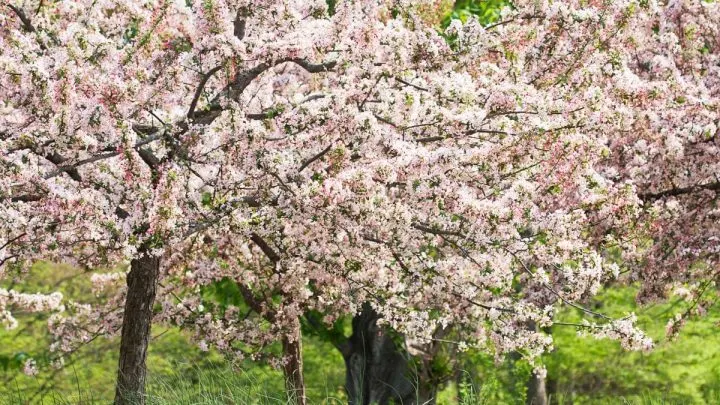In today’s article, we’ll talk about the spring snow crabapple trees. These amazing glossy green foliage trees with their white flowers will completely blow your mind. And you’ll want to plant a whole plantation of trees in your backyard or in your driveway.
In today’s article, we’ll focus on spring snow crabapple. All about its features, native habitat, the mystery behind its name, and of course, its ultimate care guide.
Let’s learn all about spring snow crabapple trees if you’re ready.
Why Are These Ornamental Trees Called Spring Snow?
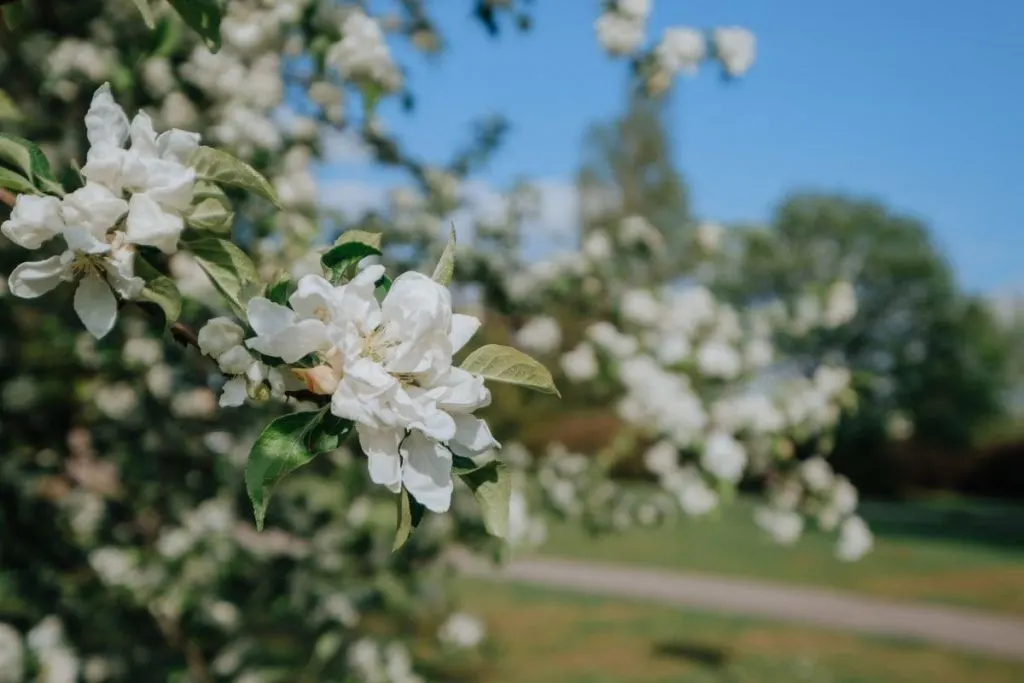
At a very first glance at their photos, you can guess why are these trees called spring snow crabapple trees. Their white flowers look like fallen snow on their dense foliage. White blooms look like snowflakes on greenish-brown branches.
If you are interested in other trees with white flowers, take a look at our article: Tree with white flowers: Garden tree beauty!
Spring snowdrops do not produce any fruit, making them a popular ornamental choice for backyard landscapes as an accent tree or you can use them in groupings. And the snowdrop flower meaning is special.
If you’re not sure why are the trees called crabapple trees, however, it’s because of the height of these trees and the fact they produce crabapple fruits. This one, as we mentioned above is a fruitless crabapple tree, but very similar to the “original” crabapple tree species.
About Spring Snow Flowering Crabapple Tree
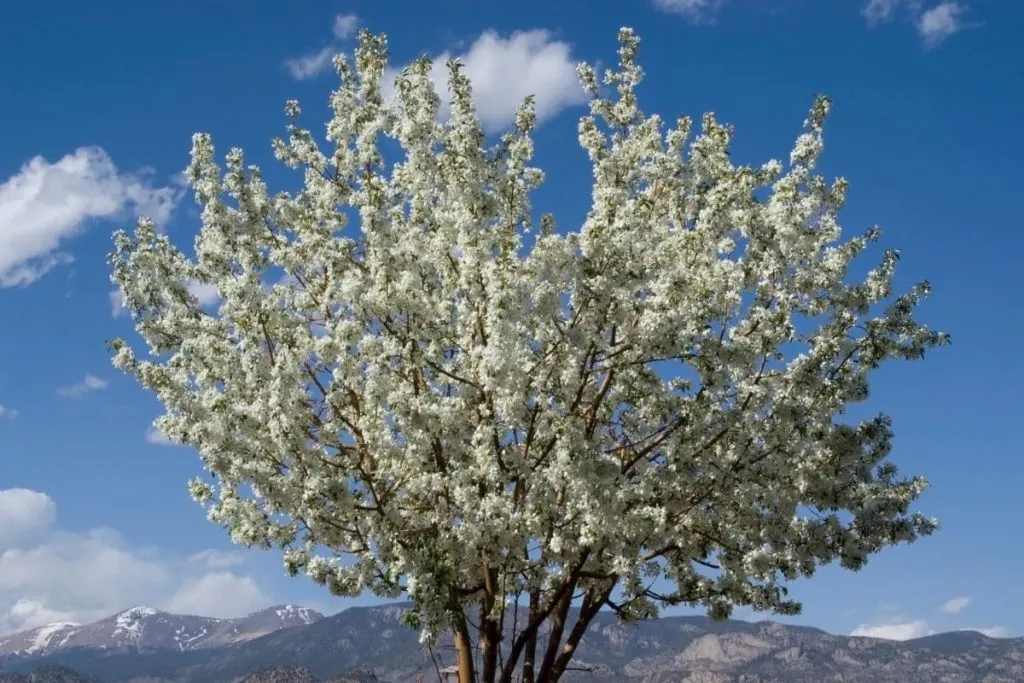
This amazing fruitless crabapple and its dark evergreen foliage will be your new favorite thing in your backyard.
It is one of the best ornamental trees all over America and Europe. It is mostly used as a street tree due to its classic upright oval form of leaves, it just looks very elegant.
During mid-spring when it blooms, it gives the most beautiful white flowers and due to that, it is considered one of the most beautiful street trees.
When the leaves fall, and when the branches are more visible, lower branches can create pretty interesting designs and “patterns” and you’ll enjoy the view from your window.
The tree can grow up to 20 feet but is considered a low-branched tree. In springtime and summertime, its foliage is green and white, but foliage turns yellow in the fall time, especially in the late fall and then the leaves fall of course.
In the springtime, it seems like the tree explodes with all those fragrant white flowers. On hot summer nights, you’ll feel the nice humming fragrance of the flowers. The tree attracts wildlife birds and bees mostly.
Spring Snow Crabapple (Malus Spring Snow): What Are The Growing Tips?
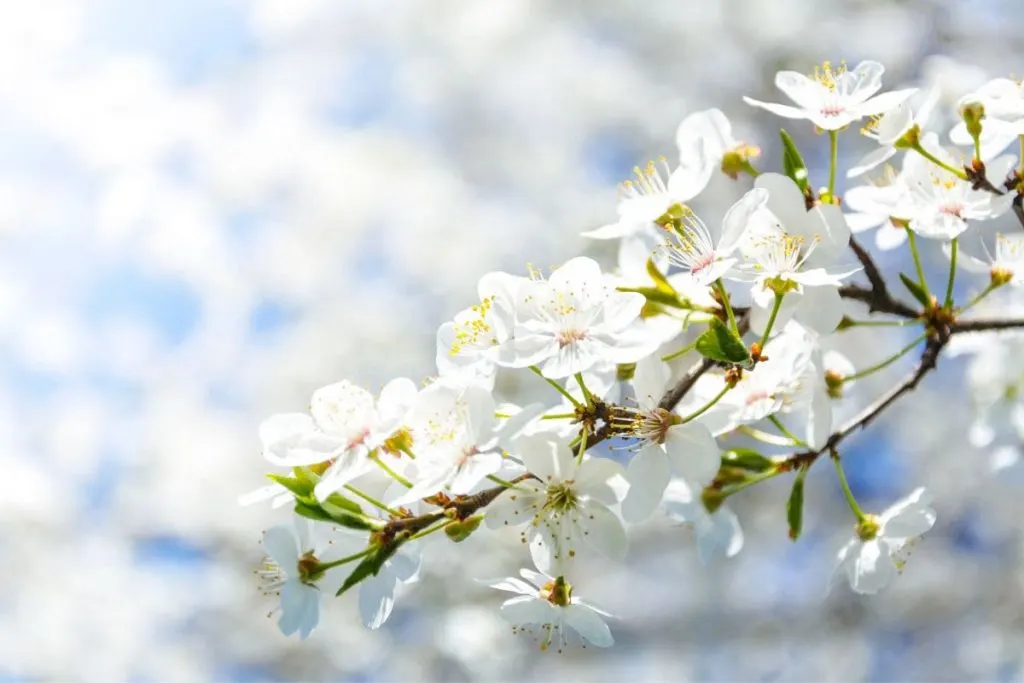
If you’ve been missing colors lately in your garden, yard, or driveway, spring snow crabapple will break the monotony with its white flowers. Green fall color is truly wonderful, but every now and then we want trees with color, any color.
But today, let’s focus on the care guide of spring snow crabapple trees in order for them to grow healthily and nicely.
1. Light Needs For Snow Crabapple
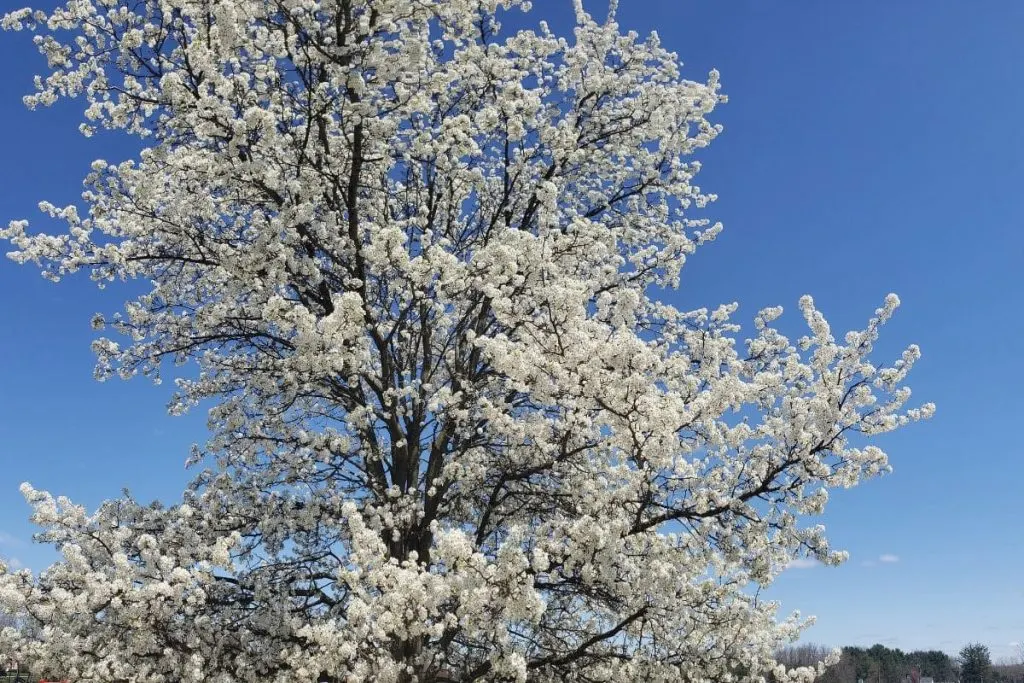
Spring snow crabapple enjoy full sunlight conditions. This tree loves the sun on its lovely petals and leaves even in hot summers.
It won’t thrive so well in shade, in bright indirect light, it can also thrive, but not so much as it would grow in direct sunlight.
If you live in regions where cold winters occur, then it’s even better if your tree has a sunny position.
Sun in the winter and lower temperatures matter for this tree, a lot! No wonder why are these beautiful flowers used for urban landscapes. Once you plant it in a sunny position, it just keeps giving. You’ll see them in almost every urban environment.
2. Watering Schedule For Crabapple Trees
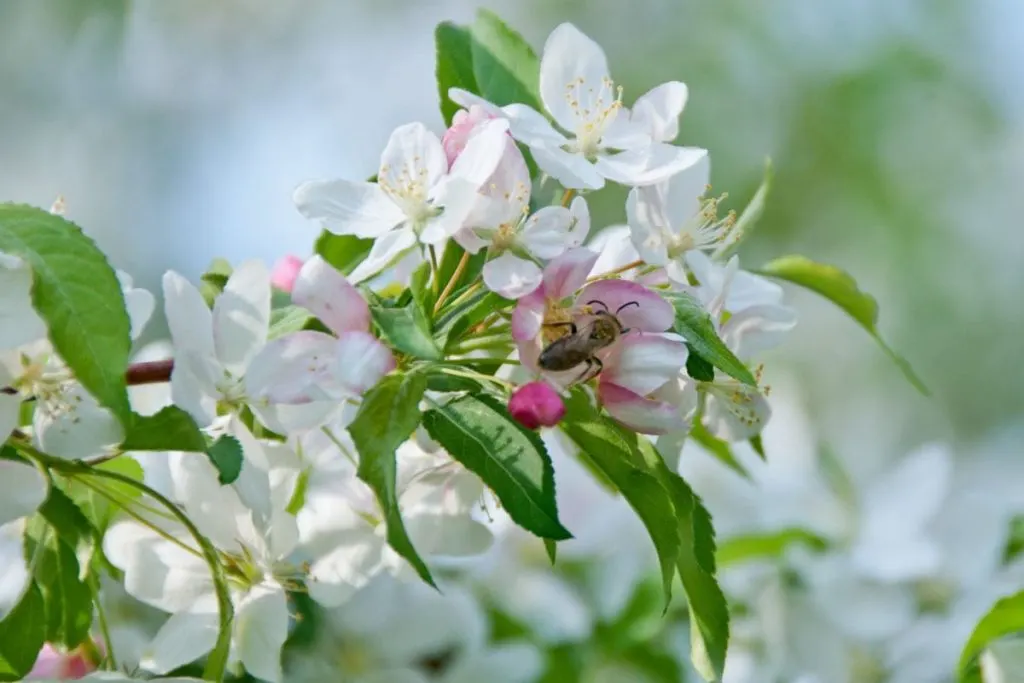
After the full sun conditions, what this tree likes the most is well-drained soil. You can put a sprinkler near the place where you planted it so you make sure your plant gets enough water during its growing process.
This can sometimes overwater your tree if you forget to turn it off, but automatic sprinklers work very well for these trees.
When the tree is mature, you can water it occasionally. The best watering routine is 2 times in 10 days. That way, the plants/trees won’t struggle in searching for drainage when producing flowers and when growing new branches.
The type of water doesn’t matter much, these trees are not fussy when it comes to water type. Rainwater, distilled water, and tap water, all work well for spring snow crabapple.
3. Soil Type For Its Stunning Fragrant White Flowers
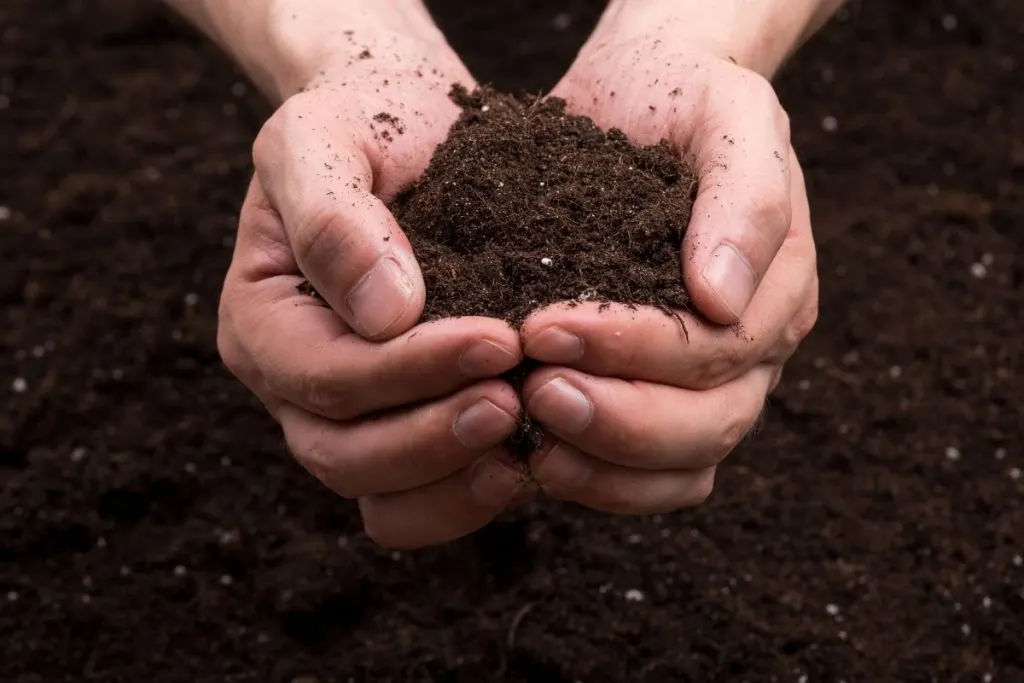
Soil conditions aren’t complicated for this tree either. This tree can thrive in almost any soil type.
It is up to you, black soil, loamy soil conditions, perlite, peat moss, you decide. As long as the soil is well-drained soil, your tree won’t have any issues.
4. Temperature And Humidity For Spring Snow Flowering Tree
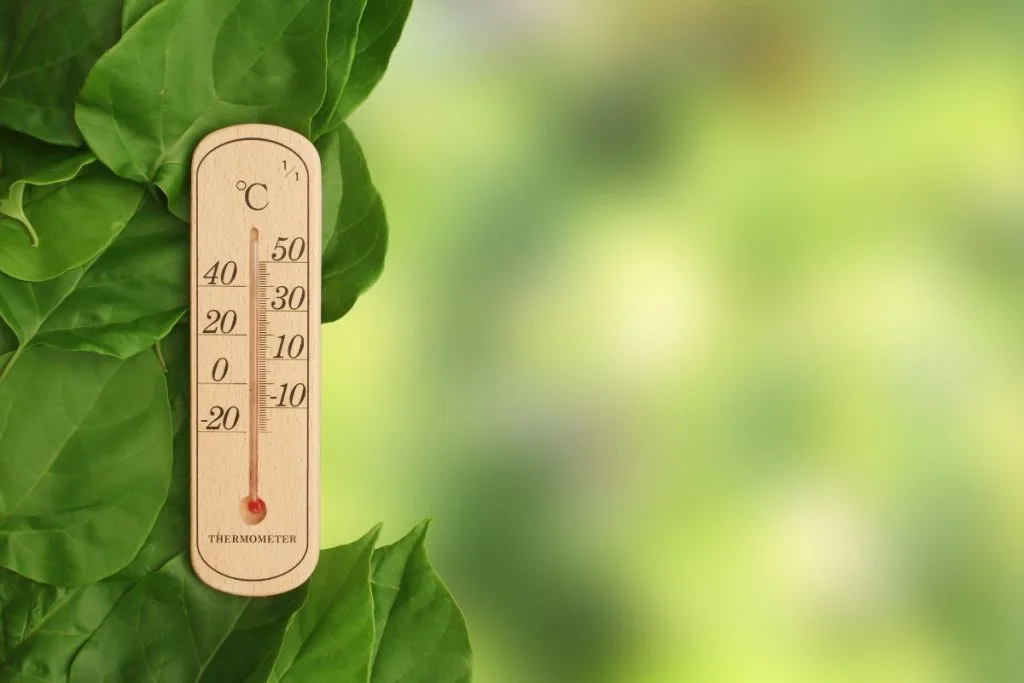
The ideal temperature for this tree would be regions where constant temperatures are between 60 and 65 F. These are some common spring temperatures that are most pleasing to this tree.
At such temperatures, the sun is not too strong, it is ideal for the season of flowering and the creation of new flowers.
However, the plant will not die or grow worse in conditions where temperatures are 55 or 70 F. However, it cannot tolerate frost much, so be aware of this when the time comes.
Air humidity is not very important for this tree. Its importance is from 30 to 70%. Considering that it is a specific wood, it is quite a large range and leaves you with the option of choosing whether to get it or not.
5. Fertilizer For Spring Snow Broad Rounded Deciduous Tree
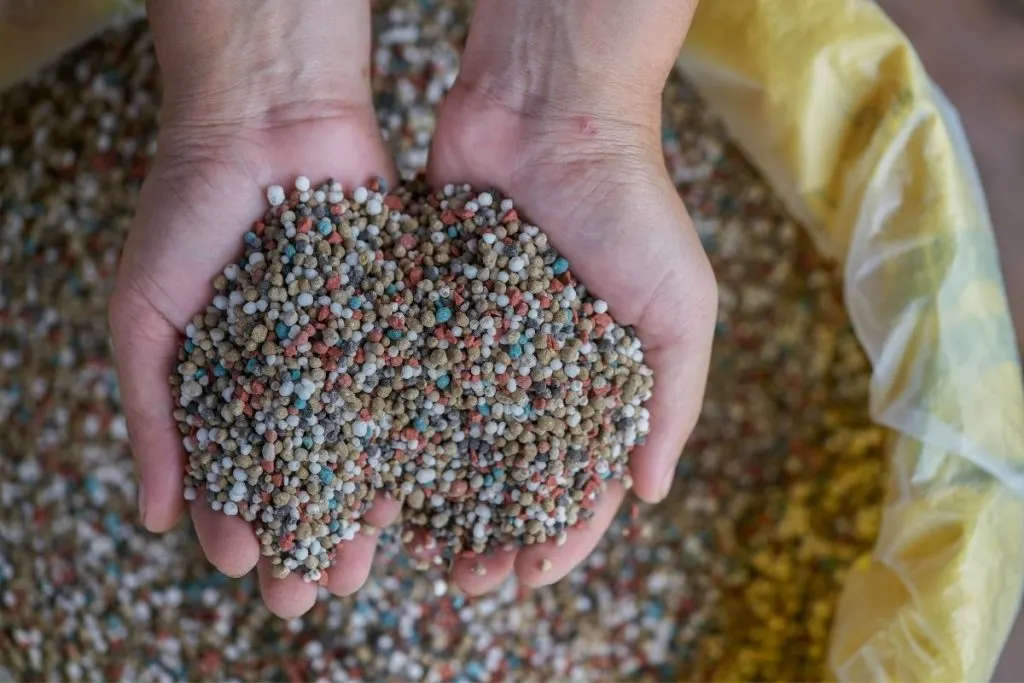
Most of the owners of this tree do not care that much about the fertilizer of this tree, not even in its flowering season. However, if you want to increase the chances that your tree will be able to bloom healthily and properly, it is always better to feed it. If you decide to do this, choose a general 10-10-10 fertilizer because it has all the necessary nutrients for this tree.
6. Pruning Spring Snow Specimen Plant
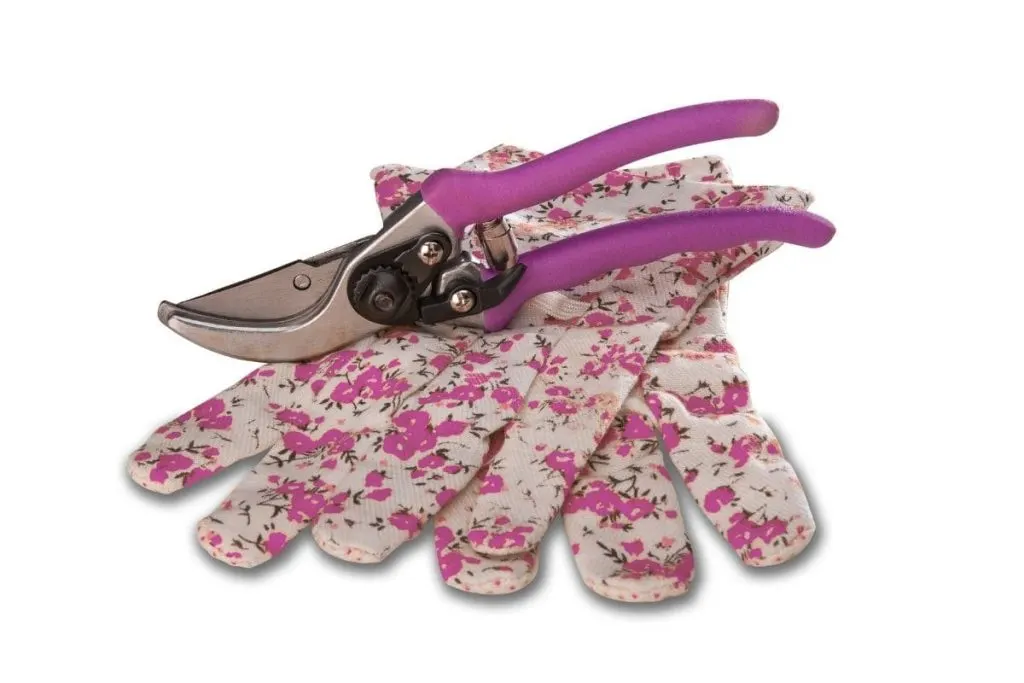
Its erect branches are definitely something you’ll love right away, but when the time comes (in the springtime) you’ll have to prune it.
As with 90% of the plants or trees, we prune to control the damage, we prune at the end of the flowering season and we prune our trees to make sure they will give healthy flowers next season. When the time comes, do it like this:
- Prepare a pair of sharp garden shears, not houseplant shears, garden shears, or a super sharp knife since these are tougher branches compared to houseplants.
- Cut off the tip of each twig yourself, one inch below where the flowers bloomed.
- When you prune more there is a chance that it will not regenerate.
- This part (mentioned) that you are cutting is the softer part of the branch near the very top of it from which the flower grows.
- When the tree is smaller, there is a chance to protect the tips with some foil, but on a large 20-foot tree, this is not really the case, and only pruning will be enough because the tree is already mature and used to changes in the environment.
7. Propagation Of Spring Snow Street Tree
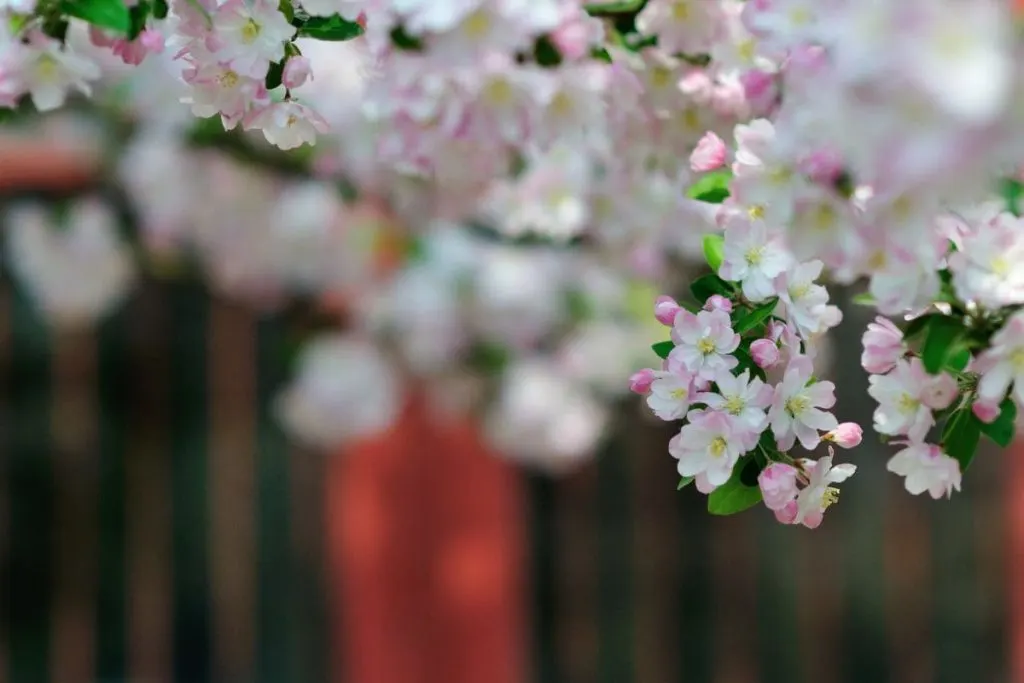
The easiest and essentially the only way to properly propagate a spring snow tree is through stem cuttings.
We’ve previously taught you how to do this in other articles, but this time we’re going to lay out the material so that you can properly perform this process when the time comes.
Sometimes, people try to propagate this tree in water as well, but the chances that you’ll make it like that are very poor. Stem cuttings are almost 100% sure and the correct way of propagating spring snow trees.
– Propagating Spring Snow Tree By Stem Cuttings
When the flowers completely disappear and when new leaves begin to form, then you know that it is a sign that you can propagate your tree. Do it like this:
- Peat moss and a bit of perlite soil should be placed in a pot or a container with drainage holes in which you’ll put the stem cuttings.
- Make sure you cut off a healthy stem that has a couple of new leaves on it.
- Use garden shears to do this carefully and correctly.
- It is a good idea to put rooting hormones in the container or pot, which will help the plant to grow roots sooner.
- The soil in which you place the stem should be well drained.
- Position the plant in a sunny place where it will receive at least 6 hours of direct sunlight. After 6 to 7 weeks, the roots will slowly form (root system) and you can transfer the plant to its desired position in the garden.
– Propagation Of Spring Snow Tree In Water
As we mentioned above, propagating this tree with water is not a very recommended method. There’s a huge chance you just won’t succeed, but some people like a challenge and that’s why they try. If you are up for the challenge of propagating this tree, do it this way:
- Take a jar or container previously filled with water and do the same process of cutting the stem as for stem-cutting propagation.
- Since you’re already taking your chances with this way of propagation, it would be best to use distilled water to make sure you have better and gibber chances of propagating this tree.
- Place the jar or a container on a sunny window – east-facing windows are the best location.
- Then put the cut stem in water and wait to see what happens.
- In the case of trees and generally plants with a hard base, there is really a small chance that they will manage to grow roots in the water, but you never know.
How To Care For Spring Snow Tree In Late Winter?
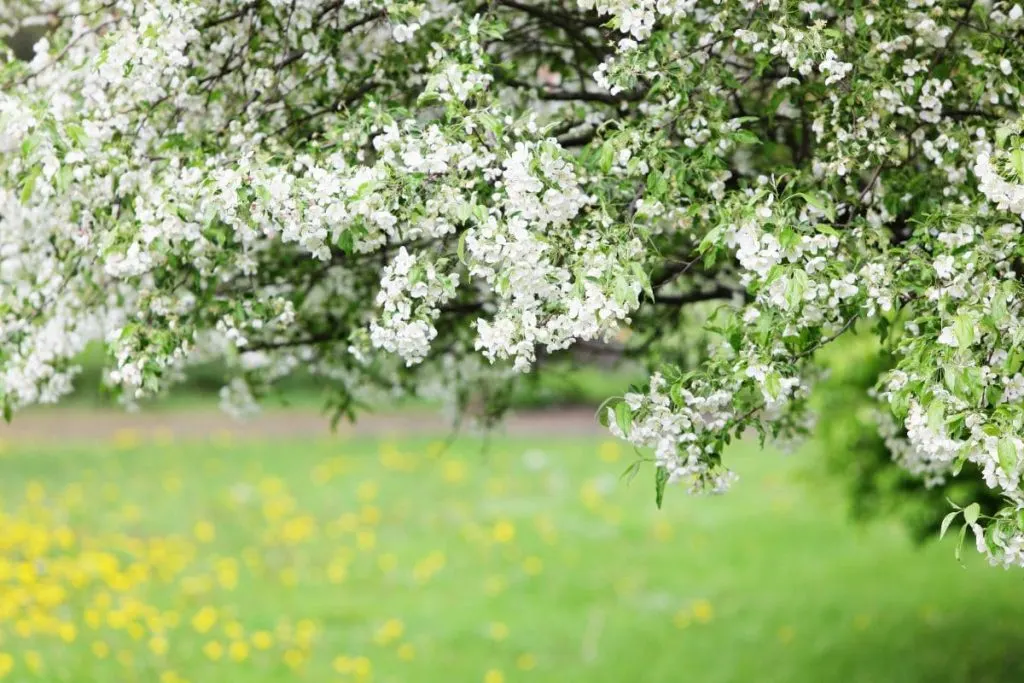
Your spring snow tree is just another bare tree in your garden during the winter period. In order to make sure that you did not destroy it in the winter, you can protect the soil around your tree with soil protection film, some kind of nylon, etc.
You have already trimmed your tree earlier, so it is ready for winter. If you followed the other tips in its care guide, in the spring and early summer, this tree will again produce beautiful white flowers. It’s not too hard to learn how to keep plants warm in winter.
Pests Of Spring Snow Evergreen Trees
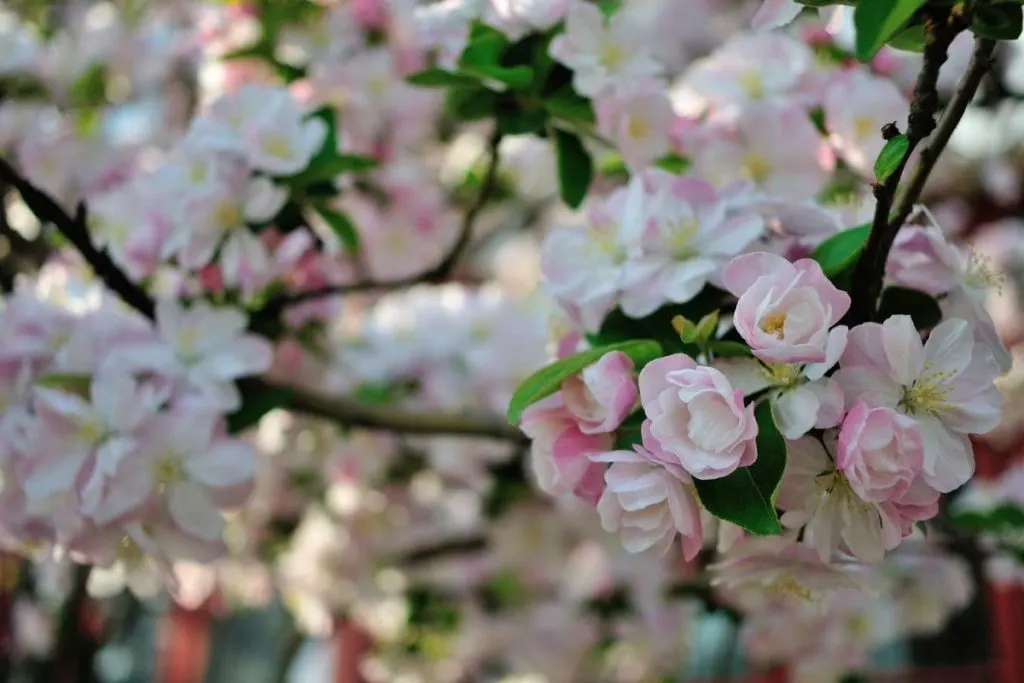
The most common pests of flowering trees are mites and various insects. Exactly which insects or pests will attack your tree also depends on where you live.
Almost every region has specific pests or insects. Somewhere they are more widespread, somewhere less. But we can still narrow down the choice and say that spring snow wood is mostly attacked by:
- spider mites,
- various types of spiders,
- wasps,
- ants,
- various types of earthworms,
- gold flies,
- bagworms,
- locust, etc.
All of them mostly harm the flower itself during its flowering period, and often prevent or stop the process itself, because they “drink and eat” everything healthy in it and thus destroy it.
Some still focus on the bark and leaves, but either way, none of the above can be good for your tree because it harms it. You can always read about how to get rid of spider mites during flowering and any other pests before you react.
Diseases Of Spring Snow Tree
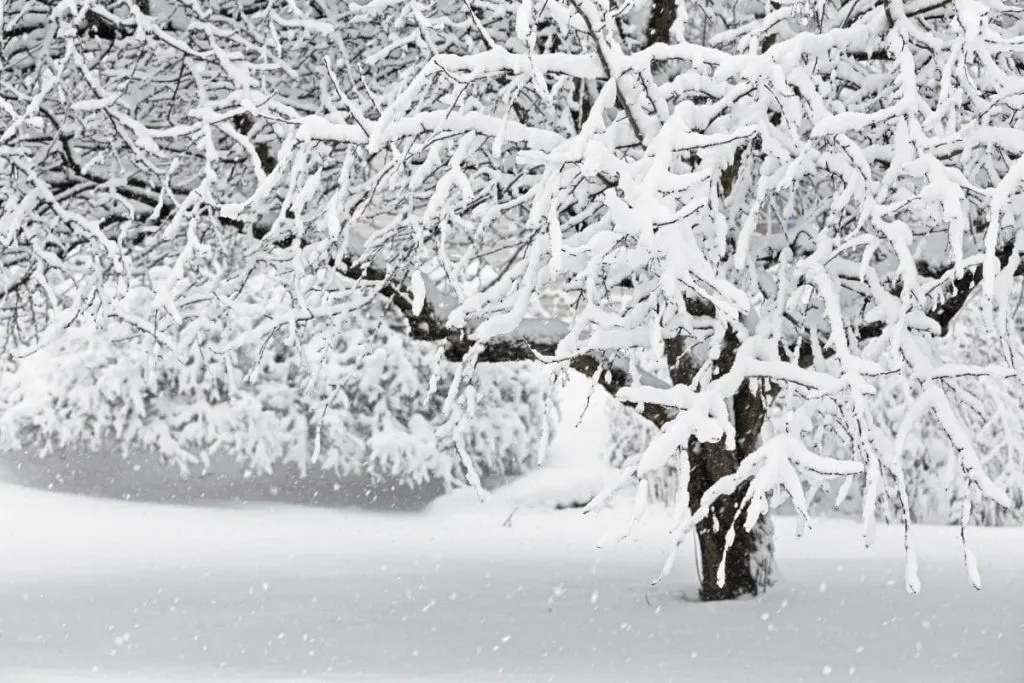
Unfortunately, not all damage can be regenerated in nature. The most common diseases are cottonwood caused by a fungus that comes from the soil, followed by powdery mildew, and many other diseases.
Protect your plant with an insect and pest repellent in early spring and your plant will surely come out on top. This isn’t so easy to avoid as it’s easy to prevent your tree from getting pests.
Sometimes, you simply can’t control what’s going under the ground in its soil and roots. But once you notice the problem, always ask a professional before doing anything on your own.
FAQ

Just like always, we won’t let you leave us unsettled or leave you with more questions about a plant, flower, or tree in your head. In this section, we will answer the most frequently asked questions regarding the spring snow tree and in this way, we will complete the entire story about this tree.
By the time we get to the final part, you will be able to decide whether to get the tree for your garden or if you already have this tree, you will get a complete picture of its correct care guide. Let’s see what we have prepared for you below.
What Is The Most Beautiful Crab Apple Tree?
The crab Apple tree that is considered the most beautiful variety of crabapple trees is the Japanese crabapple tree. It has pink-white flowers and probably the most beautiful petals you’ll see on any flower. Along with that it has a strong purifying fragrance and attracts wildlife full of birds and bees.
It is another stunning deciduous tree that is fruitless variety just like the spring snow tree. Its flowers are usually more white in the early springtime and later on, in the late springtime and early summer, they become more pinkish in color.
Is Spring Snow Crabapple Tree Messy?
Are Crabapple Trees Toxic?
What Is A Lifespan Of Spring Snow Crabapple Tree?
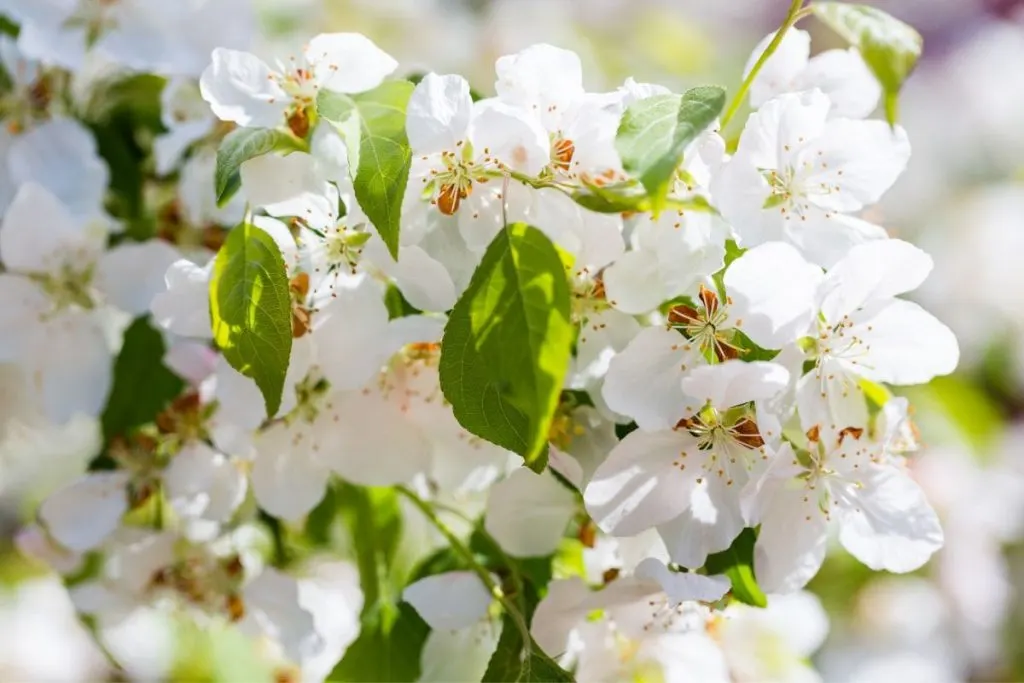
If you plant a new fresh crabapple tree in your garden or backyard, expect that your spring snow flowering crabapple tree will live between 30 to 70 years. How amazing is that? You’ll pass that lovely tree from generation to generation.
However, this doesn’t have to be correct since the oldest crabapple tree is currently 152 years old and it is planted and growing in Germany.
How Fast Do Spring Snow Crabapple Trees Grow?
Do Flowers Of Spring Snow Crabapple Tree Smell?
Are Spring Snow Crabapples Rare?
What Is The Best Growing Zone For Spring Snow?
The tree can thrive well in other, different zones too once šprovided with other good conditions that are needed for its growth.
Final Thought
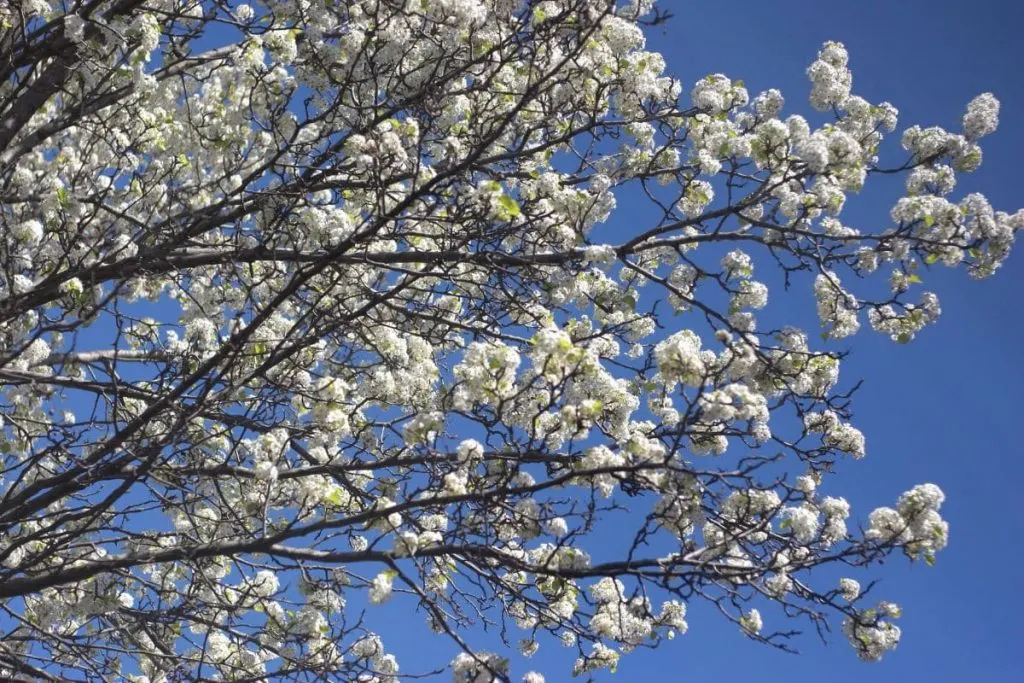
In today’s article, we learned everything you need to know about spring snow crabapple tree care. We learned the mystery behind the unique name of this tree and everything about the growth process and the rules that we must follow and respect.
The tree really doesn’t require much care, but as with any flower or tree in the garden, there are still things we need to know to make sure our tree grows in the best conditions.
These beautiful white flowers will refresh our gardens in the spring and summer, and then we will be able to see how much the little effort we put into caring for the tree pays off.
As we said above, we will mention it again: direct sun, full sun, any type of soil except sand, generally 10-10-10 fertilizer, and well-drained soil are all this tree needs for good growth.
That would be all for today’s spring snow crabapple tree article. Hope you enjoyed it, see you soon!

